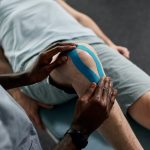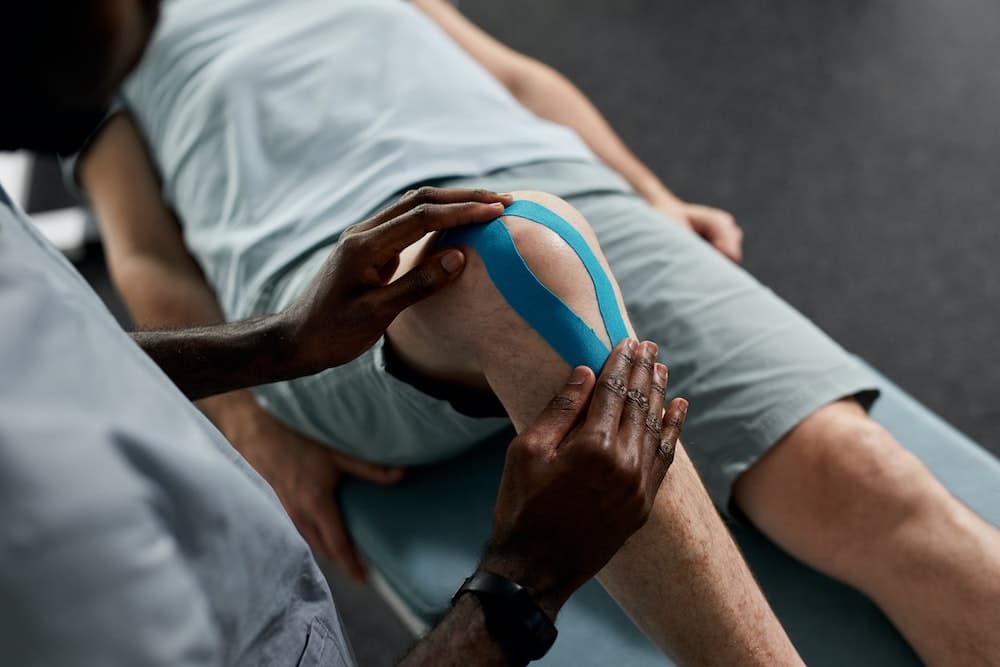Soccer, an enthralling global sport, carries with it a significant risk for injury. It is not a question of "if" but "when" a player will experience an injury during their career. Often, the knee is the most common area of concern. ACLR, or anterior cruciate ligament reconstruction, is a routine surgery for soccer players who have torn their ligaments. Post-surgery, the player enters a phase of rehabilitation, a process that requires a complex blend of strength training, stretching exercises, and patience to regain pre-injury speed and performance levels. Key to this process is the use of innovative techniques and equipment, such as multi-axis treadmills. A study by several scholars found in Google Scholar illustrates the efficacy of these machines in the rehabilitation process.
The Anatomy of a Soccer Injury
To understand how multi-axis treadmills aid in the rehabilitation process, it is crucial to comprehend the nature of common soccer injuries. One of the most frequently met injuries is a damaged anterior cruciate ligament (ACL), necessitating ACLR. This ligament in the knee joint provides rotational stability and prevents the tibia from sliding out in front of the femur. An ACL injury can be a career-ending event if not properly treated and rehabilitated.
A lire en complément : How Does Sensory Deprivation Therapy Aid in Concentration for Esports Players?
During the healing phase, it is pivotal for a player to regain their strength, particularly in the muscles around the knee. Exercises targeting quads and hamstrings are often included in the rehab program. The challenge, however, lies in restoring the player’s speed and agility – vital aspects of a soccer player’s performance on the field.
The Role of Multi-Axis Treadmills in Rehabilitation
The rehabilitation phase following surgery is the most crucial and challenging stage for any athlete. It is during this time that the strength and mobility of the injured area are gradually restored. One piece of equipment that is increasingly being used in rehabilitation programs is the multi-axis treadmill.
Lire également : What Are the Best Strategies for Developing Fast-Twitch Muscles in Sprinters?
Multi-axis treadmills are not ordinary treadmills. These are sophisticated machines that can mimic real-world conditions by moving in multiple directions – forwards, backwards, and side-to-side. This variation allows the athlete to work on strength, speed, and flexibility in a controlled and safe environment.
The use of a multi-axis treadmill can aid in gradually increasing the load and intensity of the exercise without causing undue stress to the knee. This approach minimises the risk of re-injury and ensures that the athlete can return to their pre-injury condition faster.
Evidential Support from Studies
A multitude of studies validates the effectiveness of multi-axis treadmills in the rehabilitation of athletes. One such study, which can be found on Google Scholar, investigated the impact of multi-axis treadmill training on soccer players recovering from ACLR.
The study documented that players who used the multi-axis treadmill during their rehabilitation phase showed significant improvements in their speed and agility compared to those who didn’t. Furthermore, the players also reported less pain during training, suggesting that multi-axis treadmill training could be a more comfortable alternative to conventional methods.
Implementing Multi-Axis Treadmills into Rehabilitation Programs
Taking into consideration the potential benefits and the positive impact of multi-axis treadmills, incorporating them into rehabilitation programs could be a game-changer.
Initially, the focus should be on low-intensity exercises, gradually increasing in intensity based on the player’s comfort and progress. This gradual progression will help the player regain their muscle strength and endurance without aggravating the injury.
Ultimately, the aim is to simulate game-based scenarios, preparing the player to return to the field. To this end, multi-axis treadmills can replicate the unpredictable, fast-paced movements that a soccer player encounters in a match, making them an invaluable tool in the rehabilitation process.
The Future of Rehabilitation
The advent of technology in sports rehabilitation has marked a new era in injury management. Multi-axis treadmills are just one example of how technology can aid in quicker, safer, and more efficient recovery from injuries.
With the spotlight on reducing recovery time and improving player performance post-injury, it’s high time to embrace these innovative methods. Using multi-axis treadmills not only accelerates the healing process but also prepares the player for the challenges that await them on the soccer field. By bridging the gap between rehabilitation and performance, they are undoubtedly the future of sports rehabilitation.
The Impact of Multi-Axis Treadmills on Crucial Rehabilitative Aspects
Implementing multi-axis treadmills in rehabilitation programs has been shown to impact crucial aspects of recovery post-surgery. These crucial aspects include enhancing the patient’s lower limb strength, improving their countermovement jump ability, and improving their Lysholm score – a measure of knee function and pain.
One of the key applications of multi-axis treadmills is in strengthening the muscles around the knee joint. These machines allow the patient to perform high-intensity exercises that target the quads and hamstrings. Through the use of multi-directional movements, these machines can simulate real-world situations that a soccer player may encounter during a match. This simulation can help the player regain their strength and increase their endurance in a safe and controlled environment.
Furthermore, multi-axis treadmills have shown to improve the countermovement jump ability of soccer players. The countermovement jump is a vital skill in soccer, as it directly impacts the player’s performance during the match. By providing a controlled environment that mimics the unpredictability of a soccer match, multi-axis treadmills help athletes to safely regain this crucial skill.
From a clinical perspective, one of the most significant impacts of multi-axis treadmills is their ability to improve the patient’s Lysholm score. Through the use of progressive exercises that target the lower limb, these machines can help alleviate pain in the knee joint, thus improving the player’s Lysholm score.
Conclusion: The Future with Multi-Axis Treadmills
The role of technology in sports rehabilitation is undeniable. It is clear from multiple studies, including those found on Google Scholar, that multi-axis treadmills are effective in facilitating the recovery of soccer players post ligament reconstruction. With their ability to simulate real-world conditions, these machines provide a controlled environment for players to regain their strength, speed, and agility.
Furthermore, these machines have shown to improve crucial aspects of recovery, such as the lower limb strength, countermovement jump ability, and Lysholm score of the patient. Therefore, it is not hard to imagine a future where multi-axis treadmills become a standard part of the rehabilitation process for soccer players.
Ultimately, it’s all about control chaos in the rehabilitation process. By bridging the gap between rehabilitation and performance, multi-axis treadmills provide an effective means of controlling this chaos. The end goal is to enable soccer players to return to the field and perform at their pre-injury levels or better. With the aid of multi-axis treadmills, this future is not only possible but also achievable.











